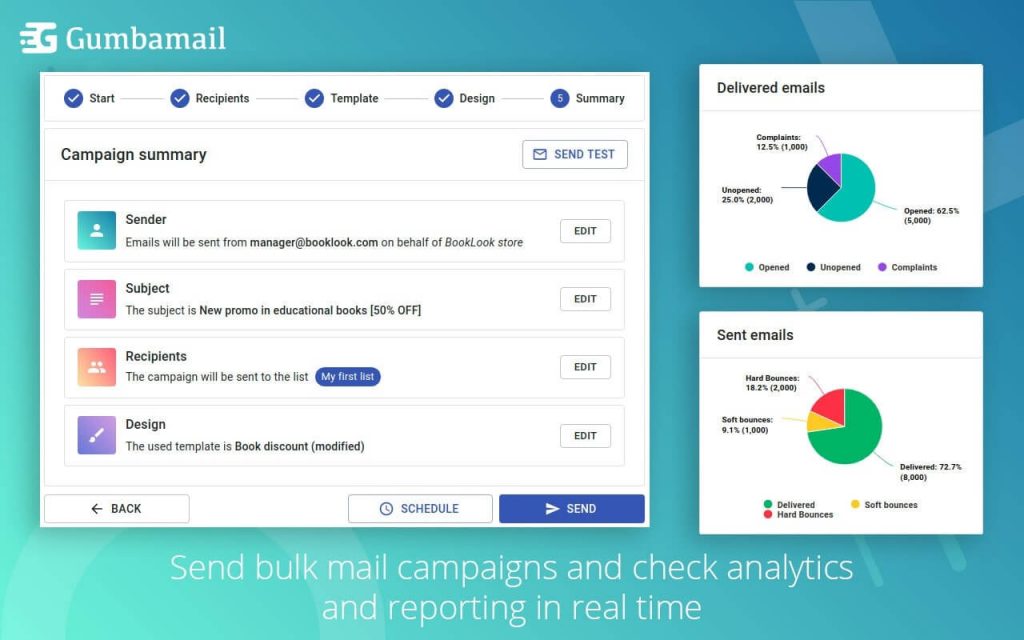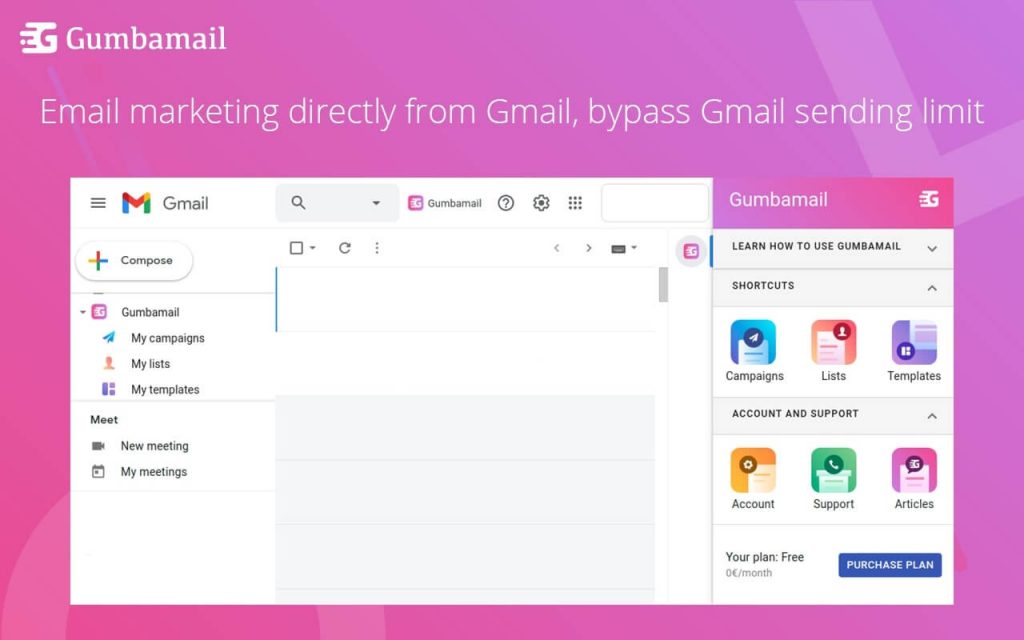What a Click-to-Open Rate Is and How to Calculate It
One of the biggest mistakes in email marketing is assuming it’s a one-sided channel.
Marketers like to think their content is always relevant, engaging, and stop-scrolling worthy. In reality, it’s your audience — not your own intuition — that makes that judgment call. If you’re pouring your heart and soul into every word you type, yet no one seems to be clicking any links, it’s a clear sign you need to tweak your strategy.
Your click-to-open rate, or CTOR, is one of the best benchmarks to judge the effectiveness of your email content. If your CTOR takes a sharp plunge, you may need to reevaluate your audience’s wants and needs, then reconsider which types of content would satisfy their interests.
Below, we explain what an email click-to-open rate is, how it’s measured, and how you can tweak your email marketing strategy to improve it.
What Is a Click-to-Open Rate (CTOR)?

Your click-to-open rate measures the number of people who clicked a link in your email compared to the number of people who opened that email. Your click-to-open rate is often confused with your click-through rate (CTR), which measures the number of people who clicked your email compared to the total number of emails sent.
Your click-to-open rate is calculated as follows:
Total number of unique clicks ÷ total number of unique opens x 100 = CTOR
In other words, if 50 people open your email, and 10 of those people clicked a link within your email, your CTOR would be 20%:
(10 ÷ 50) x 100 = 20%
One important thing to note is that your CTOR measures the number of people who clicked a link — not the total number of links clicked. In the above scenario, if 50 people opened your email, and 10 different people each clicked three different links within that email, your CTOR would still be 20%, not 120%.
According to Get Response, the average click-to-open rate ranges from 5.03-13.31% worldwide, depending on your geographical location. Most industry experts will agree that any CTOR above 10% is good, while a CTOR hovering around 15% is excellent.
Why Does Your Click-to-Open Rate Matter?
Your CTOR is important for measuring your audience engagement.
While your email open rate shows you how many people opened your email, this doesn’t tell you how many people actually read it. (Case in point: Many people open emails just so they can hit the unsubscribe link.) However, your CTOR shows that the reader’s eyes traveled down the page, and found your content worthy of continued reading — even though it brought them outside their inbox.
A good CTOR shows that you are offering relevant, valuable content. If you’re sharing content strictly for educational purposes, a clicked link shows they wanted to continue their reading elsewhere. If you send out an e-commerce email, it proves that the services or products you’re selling are of keen interest to your consumers.
A low CTOR, on the other hand, shows that you may need to adjust your digital marketing strategy. If you have a healthy open rate (ranging between 15-22%), yet your CTOR hits below 5%, your message isn’t one that your audience finds shareable, newsworthy, or all that interesting (yes, it hurts — but fortunately, there’s something you can do about it).
How to Tweak Your Email Strategy to Increase Your CTOR
Your click-to-open rate is one of the best email marketing metrics to measure reader engagement. If you notice a clear dip in your CTOR, you may want to try one of the following marketing tips:
1. Start With Your Best Work
When it comes to email campaigns, the idea of “saving the best for last” is a terrible strategy.
Instead, writing an email should be like writing a New York Times article: You put your best, most relevant content first. That way, even if someone only reads the first few lines, you still hit on your most relevant points.
Research shows that people spend an average of 12 seconds reading a single email. If your email takes more than 12 seconds to read, that’s fine (and completely normal, might we add). But you need to anticipate readers’ short attention spans by writing scannable content that quickly gets to the point. In addition, try to include a bold call to action (CTA) after your first paragraph, rather than waiting for the end of your email.
2. Segment Your Email List
It’s unrealistic to expect every single person on your email list to have the exact same likes, interests, or expectations. Therefore, don’t treat them like one single person (and a generic one at that) in your email list.
Contrary to popular belief, you do not need to write two entirely different email campaigns in order to put segmentation into practice. Instead, you write dynamic content simply tailoring one trait to the individual. For instance:
- Geographical location: If you own a chain of fast-casual dining locations, and want to send out a promo email with a coupon, segment your list according to which location is closest to their residence.
- Job title: If you’re a headhunter and want to send out a monthly newsletter with new, open searches, segment your list by whether they are qualified for an executive, middle-management, or junior position.
3. Ensure You’re Delivering What You Promised
Your subject line is the single most-read piece of content in any email. Even if someone doesn’t open your email message, chances are they’ll scan the subject line when clearing out their inbox.
With that being said, sometimes marketers put all their creative juices into creating a clickbait subject line, then write the body of the message as an afterthought. This creates a sense of distrust with your email list, because they aren’t getting the valuable content you promised. This not only leads to a decreased CTOR, but a bump in unsubscribes.
Instead, rather than focusing on putting all your jazz and spark into your subject line, try this: Make it as simple as possible. Give your list accurate expectations of what they can expect. If it helps, try an A/B test to see which subject line resulted in a higher CTOR for your list.
4. Increase Your Number of Links
While this may seem obvious, one way to increase your CTOR is to simply increase the number of links within your email.
Many marketers worry about adding links to their email message because they believe it distracts readers from their CTA, thereby decreasing their conversion rate. However, remember that not all campaigns are meant to be transactional emails. Sending your audience relevant content — even if it leads them to another website, rather than your own — only builds trust with your readership. This, in turn, will help gradually improve the health of your list over time. Your readers will come to know (and expect) that you will always send them relevant content — not just a sales pitch.
Your Click-to-Open Rate Helps Measure Audience Engagement

Your CTOR is one of the most important email marketing benchmarks to measure the relevance and value of your content. In short, it helps determine how many people in your list actually read — not just opened — your email marketing campaign.
While a high CTOR shows that your viewers are engaged with your content, a low CTOR is a clear sign that it’s time to make some changes. To boost your CTOR, try A/B testing subject lines, increasing your number of links, experimenting with segmentation, and moving your main CTA further up in your email.
You need to regularly track your CTOR to gauge the health of your list, but you don’t need to make these calculations on your own. With Gumbamail, you get an easily digestible reporting dashboard where you can track your open rate, CTR, CTOR, and other benchmarks. Ready to see how Gumbamail can help increase reader engagement? Get started with your free plan today.


